Nativepcprotocol.com is a malicious domain that tricks users into allowing its fake browser notifications. It shows tons of unwanted pop-up ads causing forced browser redirection on infected PC. This threat can bring more threats to the infected system and expose users’ privacy. Read this guide to know how to get rid of Nativepcprotocol.com pop-up ads completely.
Threats like Nativepcprotocol.com keep getting back on the PC if all associated files are not removed. So you are advised to use a powerful Malware Removal Tool to run a thorough scan of your PC and delete all threats at once.
Compatible with: Windows 11/10/8/7 (32 Bit and 64 Bit)
What is Nativepcprotocol.com?
Nativepcprotocol.com is a harmful computer virus. It sneaks into your PC and modifies your browser settings without your consent. It shows lots of fake pop-ups, ads, offers, warning messages, notifications, etc. that redirect your browser to malicious sites. This redirect malware is able to infect all Windows computers very easily. It is aimed to promote dubious sites through forced browser redirections to make an illegal profit.
Nativepcprotocol.com will keep showing irrelevant ads on any webpage you visit. It will also open new tab ads, and force you to “Allow” push notifications or install malicious extensions. It can infect all famous browsers like Google Chrome, Mozilla Firefox, MS Edge, Safari, and others. Forced browser redirections and intrusive ads will soon follow after the infection.

Usually, computer users fail to conclude the reason behind unexpected browser behavior. They often restart their PC thinking the problem would go away on its own. Unfortunately, they soon realize that their system got attacked by a virus. Extensions causing such problems often get installed by malware under different names. This is why users get confused and struggle to solve the problem.
Working of Nativepcprotocol.com
This suspicious domain gets access to your browser by installing malicious extensions. The main goal of this infection is to generate traffic for questionable and unsafe third-party websites to earn revenue. The process starts with showing some pop-up ads, banners, offers, notifications, etc. on the infected. Then asking for users’ permission to show more notifications and then forced redirection of searches, full-page ads, opening new pages automatically, etc.
Whenever you will open any webpage, some ads will appear on your screen. You will try to close those Nativepcprotocol.com ads, then multiple new tabs advertisements will get opened. This is quite harassing and also could be very dangerous. Those sites that get opened without your permission, could load other malware on your system. They can install other malicious extensions or trigger the download of more harmful threats like Trojan or Ransomware.
Random redirects often do not cause much of a concern for most users. In the case of Nativepcprotocol.com, you must be very careful. Any unwanted pop-up or forced redirection of your browser is an indication of a malware attack. Therefore, if you see unwanted pop-up ads on your browser then immediately scan your PC for threats.
Nativepcprotocol.com: Threat Analysis
| Name | Nativepcprotocol.com |
| Type | Redirect Virus |
| Threat Level | High (source to distribute other harmful threats). |
| Symptoms | Users can experience changes in their browsers and excessive amounts of annoying pop-up ads. |
| Distribution | It could be distributed through spam emails, bundled freeware, porn, or torrent sites. |
| Damage | It can modify browsers, show unwanted Ads, steal personal info and bring other threats. |
| Removal | Download SpyHunter 5 Anti-Malware |
How does it infect your PC?
Nativepcprotocol.com mostly gets distributed through suspicious methods. Creators of this malware use software bundling to spread it on the Internet. When users download such bundled freeware programs, it automatically gets installed. Spam email attachments could also be used to spread threats like this. Do not open any email attachment without scanning and do not click on any suspicious links.
Browsing torrent or porn sites often causes such forced redirections which can result in the download of malware on your PC. Do not download any pirated or cracked software on your system, because they often have hidden malware and threats. Sharing files on an unsafe network (peer-to-peer file sharing), illegal patches for games, or fake software updates could also bring this threat to your PC.
So the safety of your computer is in your hand. You can avoid these kinds of activities by paying a little bit of extra attention while using your PC. Always choose the Custom or Advanced installation process to avoid the installation of hidden programs. Do not open spam emails from unknown senders. Invest in good security software and do regular of your system for threats and viruses. You can check more security tips at end of this article to avoid further attacks.
Why it is dangerous for your PC?
Nativepcprotocol.com does not only bothers you while web browsing. It can do major damage to your system if you allow this threat to stay on your PC for a long. It can also disable your installed anti-virus and firewall program. So it can stay hidden in your PC without detection. This cunning threat can also track online activities and steal your personal information.
It can gather your online banking details, credit card numbers, IP address, etc. without your knowledge. It can also share those details with cybercriminals for making illegal profits. This can lead to identity theft or bank fraud. This nasty redirect malware can risk your system’s security and privacy. You are advised to delete Nativepcprotocol.com virus from your PC as soon as possible.
How To Remove Nativepcprotocol.com
Follow this guide carefully to remove this virus completely from your system. Below you can find step-by-step instructions on how to effectively get rid of this nasty threat easily. Removal of threats like Nativepcprotocol.com Virus is never easy, so we have simplified the process for you in several small steps.
Quick Summary of Removal Instructions:
- Automatic Nativepcprotocol.com Removal Guide
- Manual Nativepcprotocol.com Removal Guide
- Start PC in Safe Mode With Networking
- Kill Malicious Process From Task Manager
- Uninstall Virus From Windows Control Panel
- Remove Virus From Windows Registry Editor
- Remove Nativepcprotocol.com From Browser
- Prevent Nativepcprotocol.com Virus in Future
Please Bookmark This Page by pressing the {ctrl+D} button or print it out on paper before you start the removal process because you may need to restart your PC or browser.
Automatic Nativepcprotocol.com Removal Guide
It can be hectic to remove threats from an infected PC but the use of powerful Anti-Malware can make it quite easy. SpyHunter anti-malware can help you to remove Trojan, Ransomware, Spyware, Adware, PUPs, etc. easily. You can scan your system for Nativepcprotocol.com virus, and all other hidden threats at once. All you need to do is to download this software and run a new scan on your PC.
It will find all the threats and viruses in no time and save you lots of time and effort. This amazing software also provides 24X7 customer support and one-on-one Spyware HelpDesk support for Custom Malware removal. Advanced System Guard feature detects and removes threats in real time. It has a very User-Friendly Interface and regular Malware definition updates make it most effective against the latest attacks.
How SpyHunter 5 Anti-Malware Works
- You will begin by downloading the software on your system for which you have to click on the below download button.
Geek’s Recommendation
Threats like Nativepcprotocol.com keep getting back on the machine if all associated files are not removed. So you are advised to use a powerful Malware Removal Tool to run a thorough scan of your PC and delete all threats at once.
Compatible with: Windows 11/10/8/7 (32 Bit and 64 Bit)
- Once the software has been downloaded, double-click on SpyHunter-Installer.exe to install the Anti-Malware program on your PC and proceed with the setup.

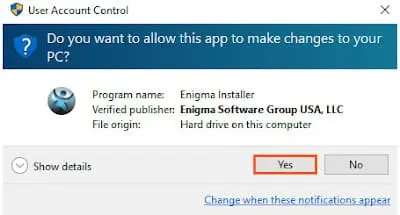
- After installation, you will need to launch the Anti-Malware application. From the welcome screen click on the Start Scan Now button to initiate a new scan of your PC.
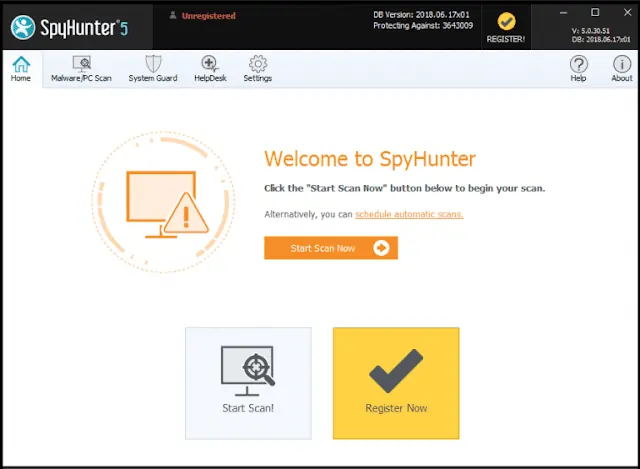
- Once the scanning process begins, it will take some time to run a thorough diagnostic of your PC and find all hidden threats and malware.
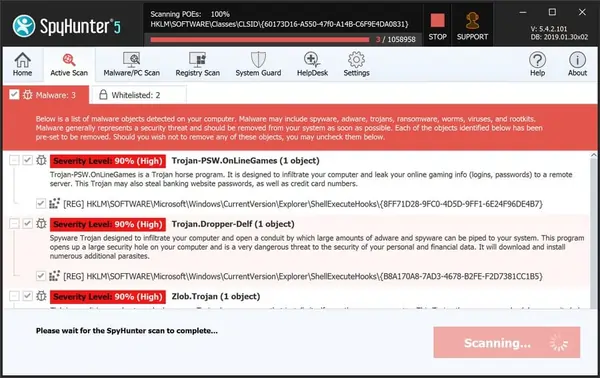
- Soon you will find a complete list of all the threats on your system screen. Then you will need to click on the Next button to delete all the viruses.
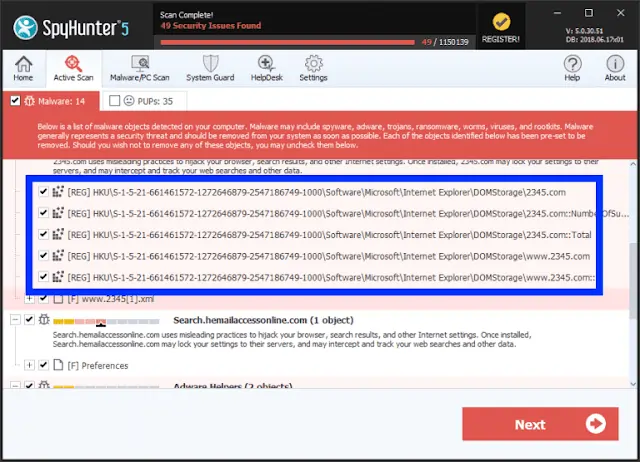
Manual Nativepcprotocol.com Removal Guide
Attention! For the safety of your system, please confirm a few things before you begin manual removal:
- You have done this before, which means you have experience in removing the virus manually;
- That you know your way around PC and all necessary processes and applications;
- You know about Registry entry and the Serious repercussions of any mistake;
- Make sure you can reverse any mistake made during virus removal.
If you don’t attain any of the above standards, then manual removal could be a very risky idea. It is most likely best for you to use the SpyHunter 5 Anti-Malware which is totally secure and efficient method.
Compatible with: Windows 11/10/8/7 (32 Bit and 64 Bit)
Start PC in safe mode with networking
- Click on the Windows and R keys together on your keyboard to open the Windows Run Box.
- Now you will need to type in MSConfig and then click the OK button.
- The System configuration settings box will appear on your computer screen.
- Click on the Boot tab, check the Safe Boot option, and select the network box,
- Finally, you will have to click on Apply and then press the OK button.
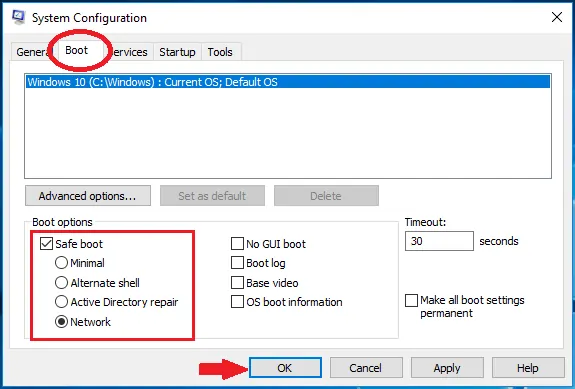
Kill Malicious Process From Task Manager
- Open the Windows Rub box again on your PC by pressing the Windows and R keys together on your keyboard.
- This time you will have to type in taskmgr and then click the OK button to open Windows Task Manager. Look for any unknown or malicious running on your system.
- Select the process which is taking lots of systems resources and then click on the End Task button.
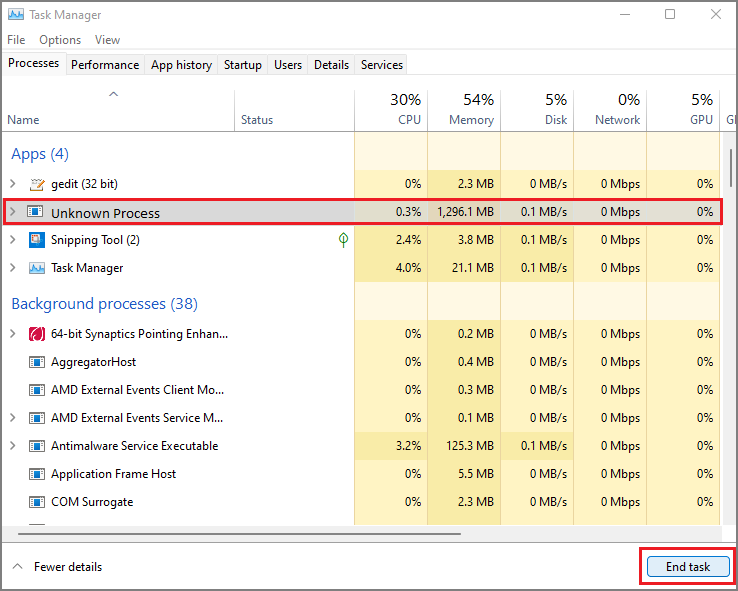
Uninstall Nativepcprotocol.com from Control Panel
- Again you will need to open the Windows Run Box, so press the Windows and R keys together.
- This time you need to open the Windows Control Panel, so type in appwiz.cpl and then click the OK button.
- Programs and Features windows will appear on your computer screen with a list of all the installed applications.
- Now you need to look for any unknown or virus related program and then Uninstall it from your PC.
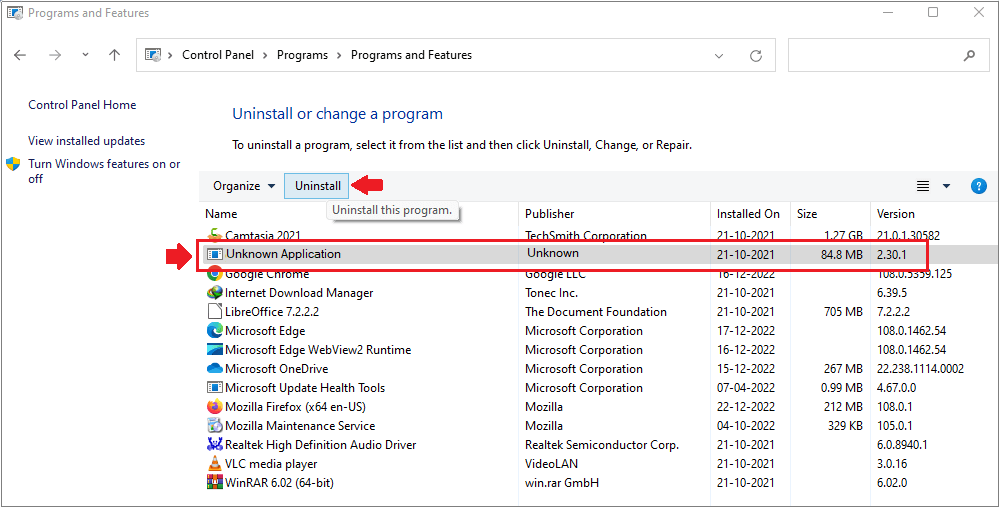
Remove Nativepcprotocol.com From Registry Editor
- Again open the Windows Run Box on your PC by using the Windows and R keys.
- To open the Windows Registry Editor, type in Regedit and click the OK button.
- Now you will have to find the virus related registry files and remove them.
- Press CTRL and F keys together on the keyboard to start a Find query.
- Type the virus name and click on Find Next button to find malicious entries and delete them.
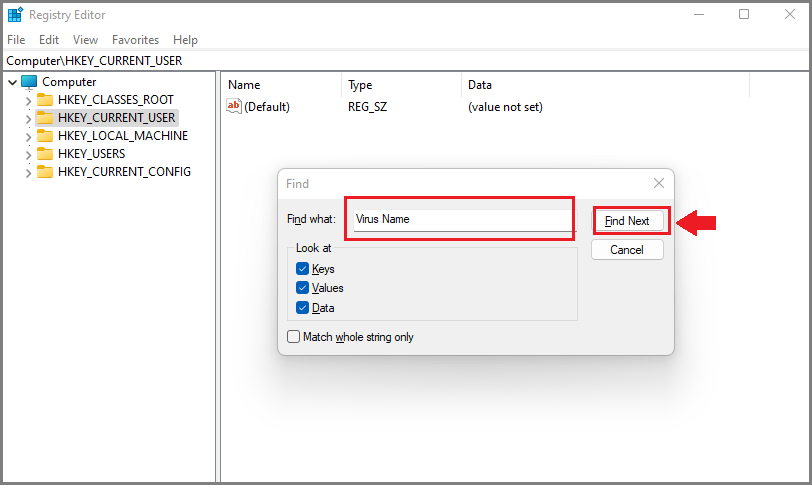
Warning: Meddling with Windows Registry files might not be a good idea if you don’t have advanced knowledge about registry files. Deleting the wrong file can break down your entire system. Proceed at your own risk, or just skip this step. You can choose the Automatic Removal method and avoid all the problems.
Compatible with: Windows 11/10/8/7 (32 Bit and 64 Bit)
Remove Nativepcprotocol.com From Browser
Most of the time, threats like this make several changes to the browser which helps it to track victims’ online activities. They use browser hijacking capabilities to show ads, offers, alerts, and notifications or steal the personal information of the victim. It is important to completely remove the virus from the browser or it may come back. Follow the below steps to remove this infection from your browser.
Remove Nativepcprotocol.com From Google Chrome
Note: Type or copy-paste – chrome://extensions in the URL bar of Google Chrome then press the ENTER button to open the extensions page directly or follow the below steps.
- First, launch the Google Chrome browser then go to the upper right corner and click on the Menu (⋮) option.
- You will see a drop-down menu, select the More tools option and then choose the Extensions option.
- Find any unknown and malicious extensions from the Chrome extensions page and then click the trash can icon to remove them completely.
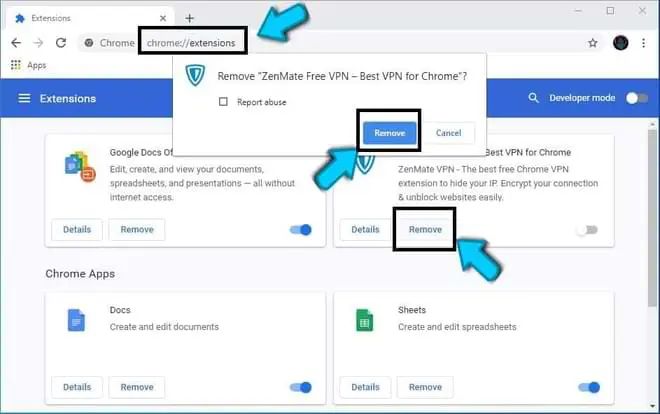
Eliminate Nativepcprotocol.com From Mozilla Firefox
Note: Type or copy-paste – about:addons in the URL bar, Firefox then hit ENTER button to open the extensions page directly or follow the below steps.
- This time launch the Mozilla Firefox browser and take your mouse to the upper right corner and click on Menu (☰) option.
- Firefox drop-down menu will appear on your screen then click on the Add-ons option.
- Choose the Extensions option from the left side menu to see the list of installed extensions on your browser.
- Look for any suspicious or unknown extensions and then uninstall them by clicking on the Remove button.
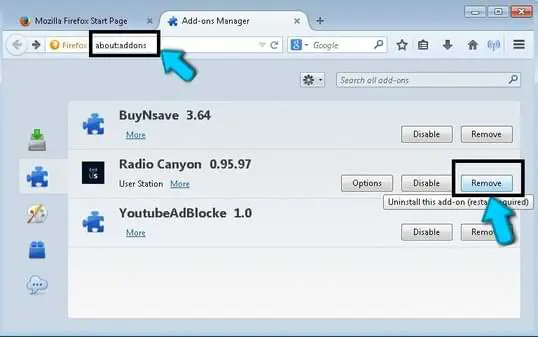
Remove Nativepcprotocol.com From Microsoft Edge
- Edge users will launch their MS Edge browser, go to the upper right corner and click on More Tools (⋮) option.
- Again to see the list of all installed extensions, click on the Extensions option from the Edge drop-down menu.
- Find any suspicious or potentially harmful extension and then click on the Uninstall button to remove it.
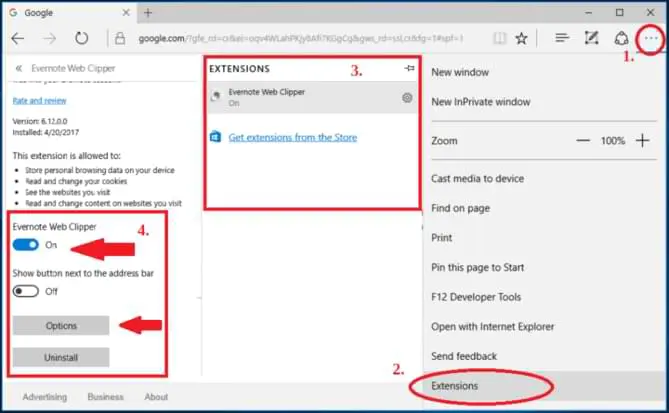
Remove Nativepcprotocol.com From Apple Safari
- If you use the Safari browser then launch it and click on the Safari menu then tap on the Preferences option.
- Now just click on the Extensions tab to see the list of all installed extensions on your browser.
- Find any virus related or malicious extensions then click on Uninstall button.
- Finally, again click the Uninstall button to remove the extension completely.
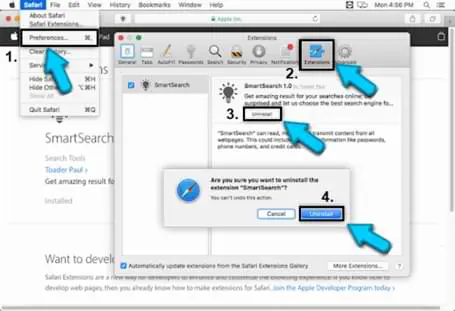
Delete Nativepcprotocol.com From Internet Explorer
- Internet Explorer users also need to click on the Menu option from the upper right corner.
- When the browser’s drop-down list appears, select the manage Add-ons option to see all installed extensions.
- If there are any unknown or malicious extensions then remove them by clicking on Disable button.
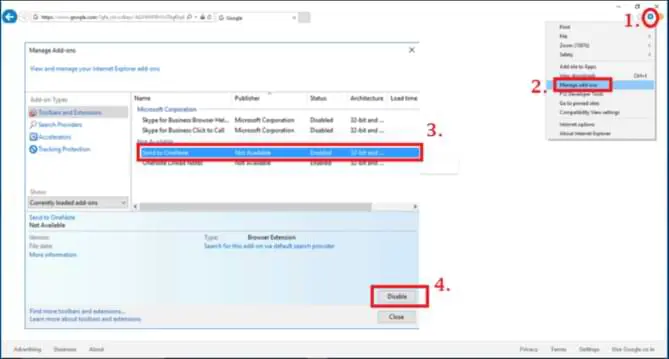
Reset Browser Setting to Default
Once you remove Nativepcprotocol.com from your browser, you might want to reset the browser to default settings to reset any changes made by the virus. Follow the below steps for that :
Google Chrome Web Browser Reset
- First, you need to open Chrome’s settings option by clicking on the Menu (⋮) from the upper right corner.
- You will find a Reset and Clean up option from the left side menu, click on it.
- Now you need to click on the Restore settings to their original defaults option from your screen.
- Finally, give your confirmation by clicking on the Reset Settings button to reset your chrome browser.

Mozilla Firefox Browser Reset
- Launch your Mozilla Firefox browser then go to the upper right corner and click on Menu (☰) option.
- A drop-down menu will appear then click on the Help option to open the Firefox help menu.
- Now click on the More troubleshooting information option.
- Press the Refresh Firefox button and when the system prompts then again give confirmation by clicking on the Refresh Firefox.
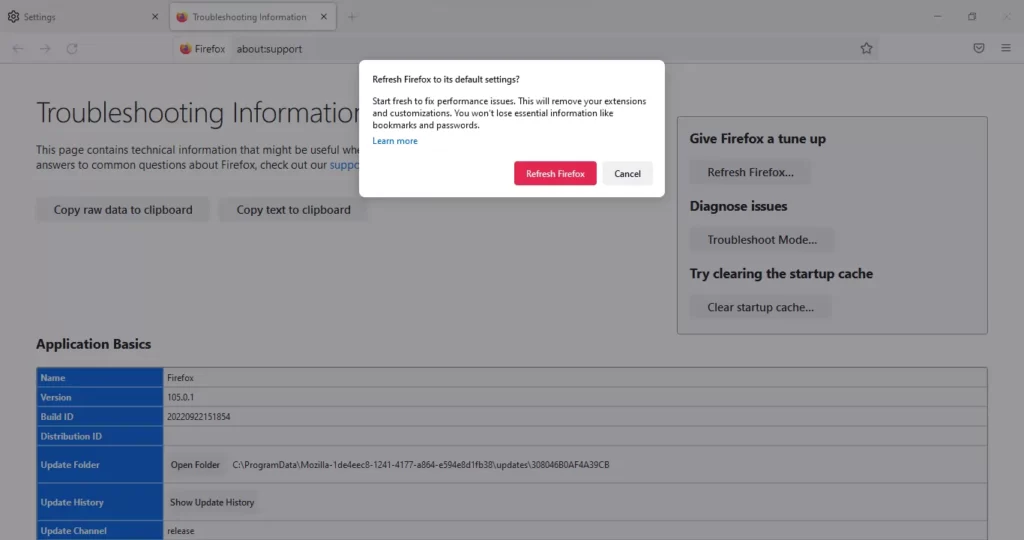
MS Edge Browser Reset
- Launch your Microsoft Edge browser then take your mouse to the upper right corner and click on More Tools (…) option.
- When the Edge drop-down menu appears, scroll down until you see the Settings option and click on it.
- Click on the Reset Settings option from the left side menu and then click on the Restore settings to their default values option.
- Finally, when the system prompts you to verify click on the Reset button.
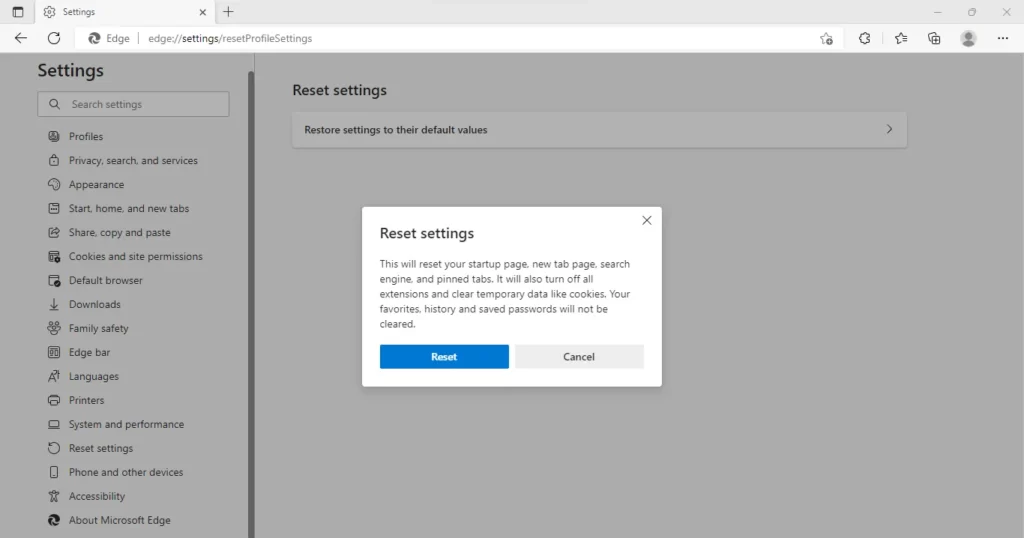
Reset Safari To Default
- Safari users need to open their browser and tap on the Safari menu then select the Reset Safari option.
- Select what you want to clear or you can simply check all the boxes and then finally click on the Reset button.
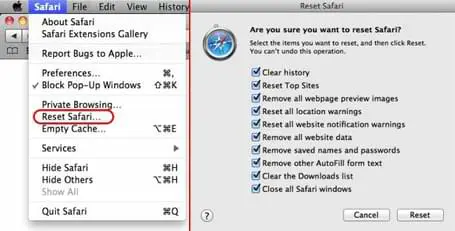
Reset Internet Explorer Browser
- To reset the Internet Explorer browser first click on the Menu icon and hit Internet options.
- Now you will need to click on the Advanced tab and then click the Reset button.
- Check the Delete personal settings option, and again hit the Reset button.
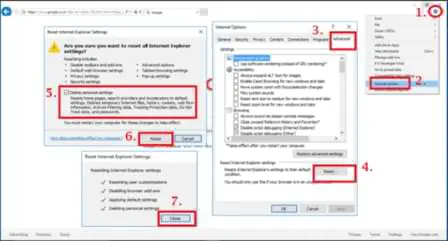
Prevent Nativepcprotocol.com in Future
- Get a powerful Anti-Malware or Anti-virus to fight cyber threats. Free versions do not offer the best protection and cracked security programs can do more damage than good.
- Always keep your Windows firewall active, and your OS updated along with other important programs. Only download updates from official sites or reliable sources.
- Check HTTPS before entering your email, password, credit card details, etc. to any site. Do not visit sites that do not have SSL security. Also, don’t forget to Enable Phishing and Malware protection in Browser.
- Do not download or install any type of pirated software, games, or illegal patches. Avoid using shady sites to acquire freeware programs because they often use software bundling. Never install a program that asks you to inactivate your anti-virus software.
- Avoid opening spam emails from unknown senders. Always scan all the email attachments before opening them. Never click on any suspicious links with some too good to be true offers.
- Connecting your PC or mobile devices to unsafe public Wi-Fi is not a good idea. You can also avoid unwanted threats coming from malicious sites by using a VPN to spoof your connection.
- Keep regular backups of all your important data on external hard drives or cloud drives to avoid data loss in case of a ransomware attack. Also, create a system restore point on your system for security purposes.

Leave a Comment